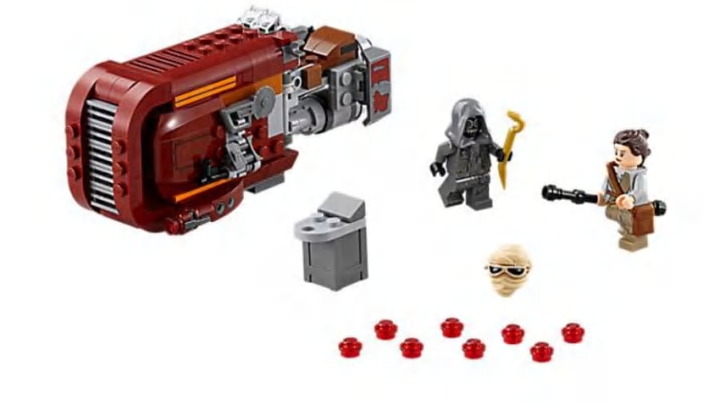Lego Star Wars sets are some of the best known Lego products and a cornerstone of Lego’s franchise-affiliated licensed production. Here’s how they get made.
After every new Star Wars movie and periodically between them, Lego releases their Star Wars sets – to the tune of 40 new products a year. Primarily, Lego Star Wars products are toys, meaning their purpose is to be fun and their skill level minimal. The sets are some of the most well-known and recognizable Lego products on the market.
Each product takes one to two years to assemble and Lego is typically very secretive about the process. Luckily, Rob Johnson, a Lego brand manager and former Lego Star Wars Senior Art Director, shared the step-by-step details during the “Designing the Lego Star Wars Galaxy” panel at the Star Wars Celebration Orlando in April.
The process, as reported by CNBC, goes like this.
1. Scope out the sets
In what will surely make any/all Star Wars fans jealous, the Lego product designers get an early peek at the set and the concept designs for an upcoming movie. They’ll see models and get an opportunity to do their own sketches to bring back to Lego HQ. Things like the color, shape and “important features” are all things designers mark down, according to Johnson. Then, it’s back to the lab.
2. Free build the basics
The designers next use Lego pieces and “free build” to get the basic shape of the vehicle or set. Since most Star Wars toys are targeted for children ages six to nine, the sets cannot be too technical, meaning the ability to make them simply and with already developed pieces is key. Still, sometimes a set will call for a special design piece – particularly when ships and speeders are involved.
3. Tinker with the details
After the free build, Lego designers “will create dozens of different speeder designs, each with a slightly different shape, until they find the one that is just right.” They tinker with seats, engines, how long the nose is and other details for a balance of accuracy and aesthetics.
4. Add “play value”
It’s essential to the Lego team that the sets function as toys first and foremost. As such, Johnson told CNBC how designers will add “play value” to “enhance the experience.” Throughout the panel, Johnson used Rey’s speeder as an example and in this case, play value looked like a built-in storage unit with hinged panels for the kids to stash anything Rey scavenged.
5. Adapt and adjust
Once the team of designers has what it thinks is close to a final product, there’s still more tinkering to be done. The design will go through “several more prototypes” to both better incorporate the new play elements as well as adjust color or include new and customized bricks.
6. Build reference boards
Reference boards serve a couple purposes. First, they show every single piece in the correct color and shape needed to build the set. This allows the design team to double check they have included everything and they’re pleased with the final set. But it also provides an essential touch point for the packaging team, who is responsible for assembling the sets and deal with many simultaneous projects.
7. Give the characters hair
Last but not least, every set needs its minifigs. A decal change will due for the face and body pieces, but hair and headpieces – such as the wrap Rey wears in the desert – must be hand-sculpted. Because of Lego size, molds are made at a 3:1 scale before being shrunk down, according to Johnson.
And just like that – or, rather, after one to two years – you have a Star Wars set.
